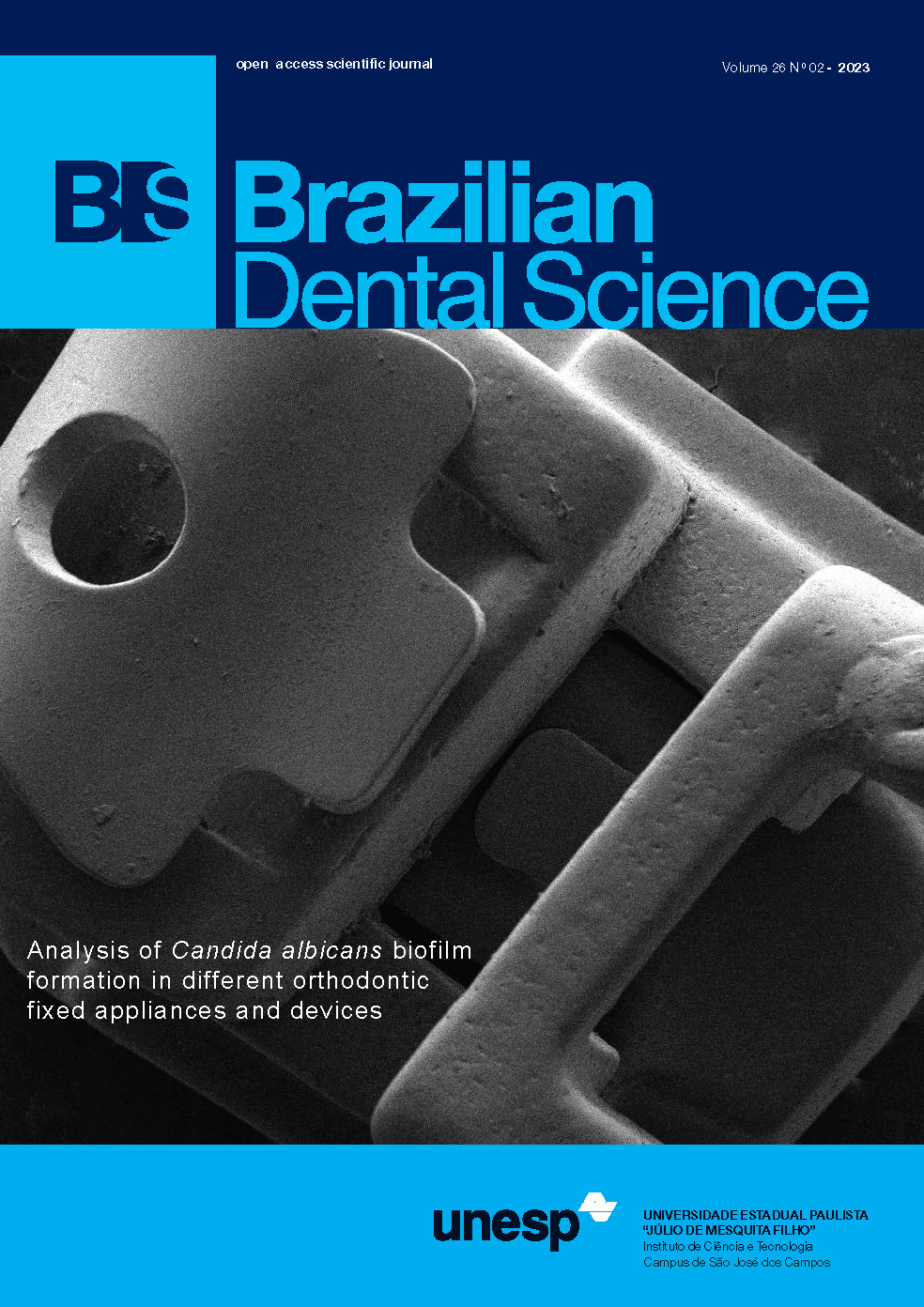The ability of different formulations of artificial saliva to protect dentin from erosive wear
DOI:
https://doi.org/10.4322/bds.2023.e3767Resumen
Objective: Evaluate the protective effect of artificial saliva formulations associated or not with mucin on dentin. Materials and Methods: Bovine dentin specimens were randomly allocated to 10 groups (n = 20) according to the artificial saliva tested and the presence or absence of mucin: Amaechi et al. (1998); Klimek et al. (1982); Vieira et al. (2005) and Eisenburger et al. (2001) and deionized water (control). Samples were submitted to an erosive cycle consisting of two immersions of 120 min in the saliva, followed by 1 min in hydrochloric acid solution, and new storage in saliva for 120 min. Surface loss ( um) was measured before and after the cycle. Data were analyzed using 2-way ANOVA and Tukey’s test (p < 0.05). Results: A significant difference was observed for the saliva formulation but not for the presence of mucin. The deionized water provided the highest surface loss and the Eisenburger’s saliva formulation the lowest. The groups testing the Amaechi, Klimek, and Vieira saliva did not present significant differences. Conclusion: Eisenburger’s saliva formulation provides a higher protective effect against dentin erosion. The presence of mucin did not increase the erosion-preventive effect of artificial saliva formulations.
KEYWORDS
Artificial saliva; Dental erosion; Dental Wear; Profilometry; Surface loss.
Descargas
Descargas
Publicado
Cómo citar
Número
Sección
Licencia
Brazilian Dental Science uses the Creative Commons (CC-BY 4.0) license, thus preserving the integrity of articles in an open access environment. The journal allows the author to retain publishing rights without restrictions.
=================
COPYRIGHT TRANSFER AND RESPONSIBILITY STATEMENT
(PDF)
For all articles published in the BDS journal, copyright is retained by the authors. Articles are licensed under an open-access Creative Commons CC BY 4.0 license, meaning that anyone may download and read the paper for free. In addition, the article may be reused and quoted, provided that the original published version is cited. These conditions allow for maximum use and exposure of the work while ensuring that the authors receive proper credit. All metadata associated with published articles is released under the Creative Commons CC0 Universal Public Domain Dedication.
Before the submission, authors must obtain permission to reproduce any published material (figures, schemes, tables, or any extract of a text) that does not fall into the public domain or for which they do not hold the copyright. Permission should be requested by the authors from the copyright holder (usually the Publisher, please refer to the imprint of the individual publications to identify the copyright holder).
The authors hereby attest that the study is original and does not present manipulated data, fraud, or plagiarism. All names listed made a significant scientific contribution to the study, are aware of the presented data, and agree with the final version of the manuscript. They assume complete responsibility for the ethical aspects of the study.
This text must be printed and signed by all authors. The scanned version should be submitted as supplemental file during the submission process.






















